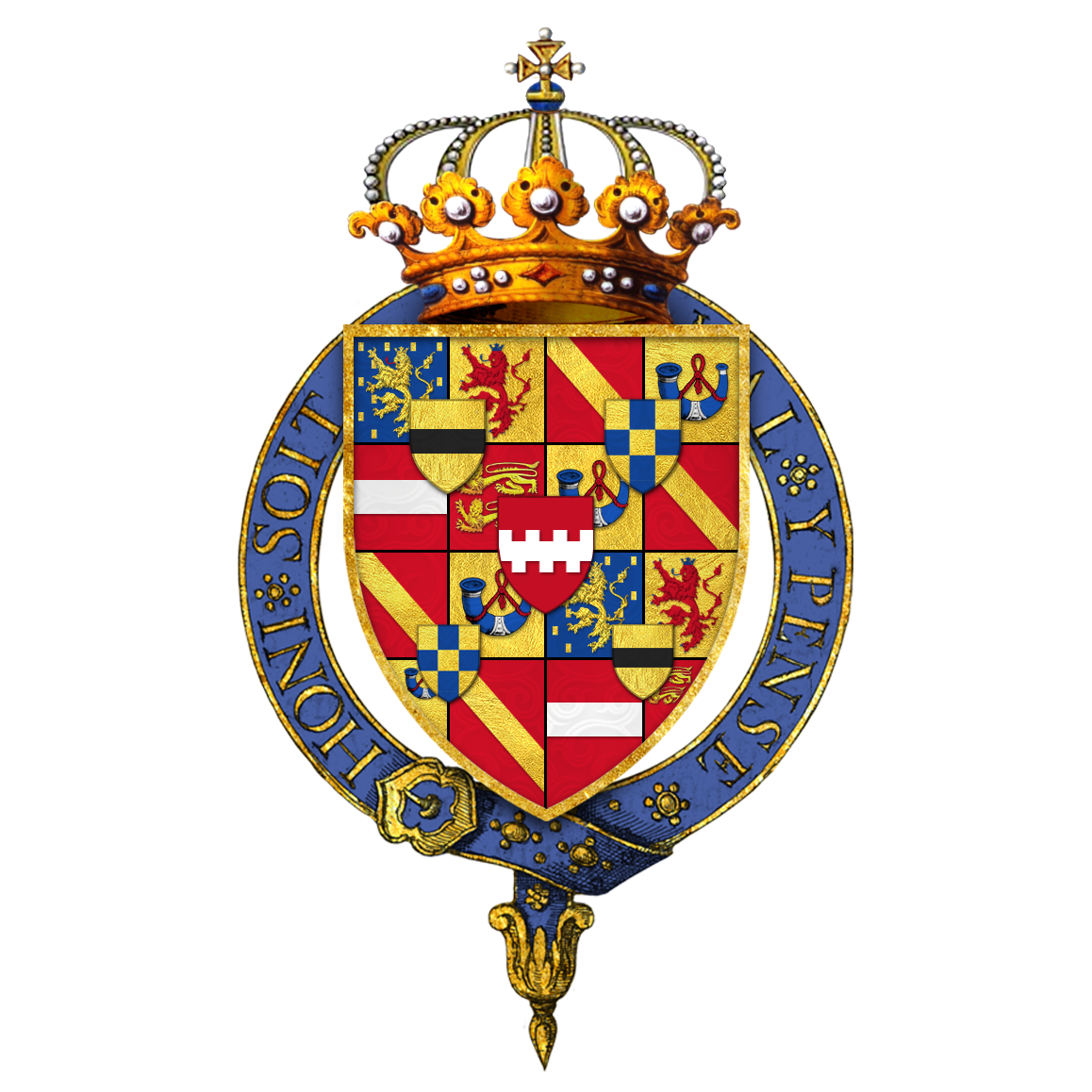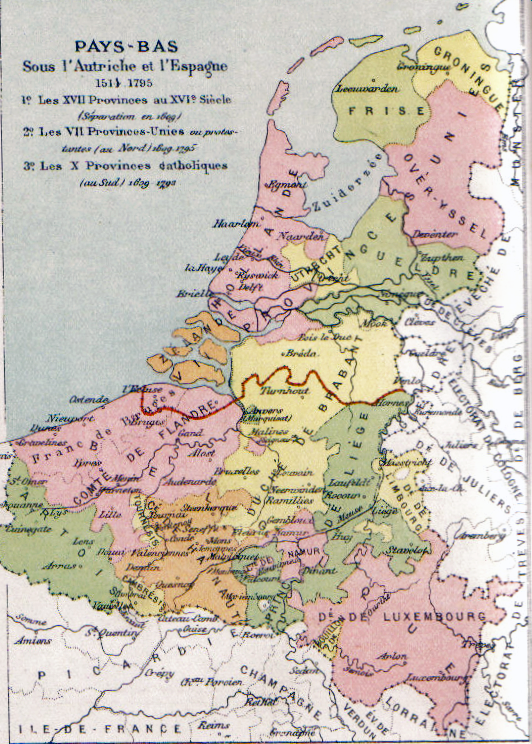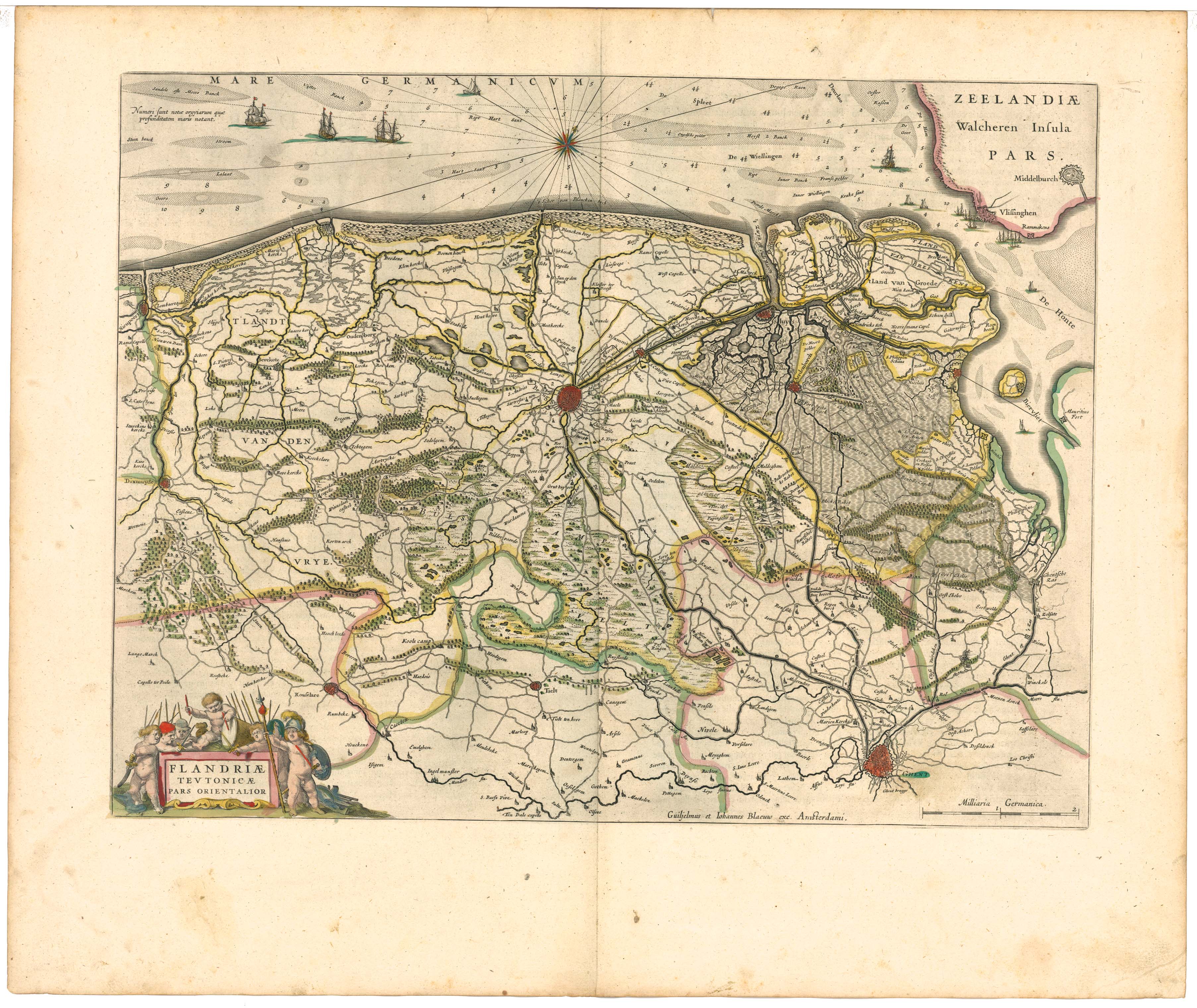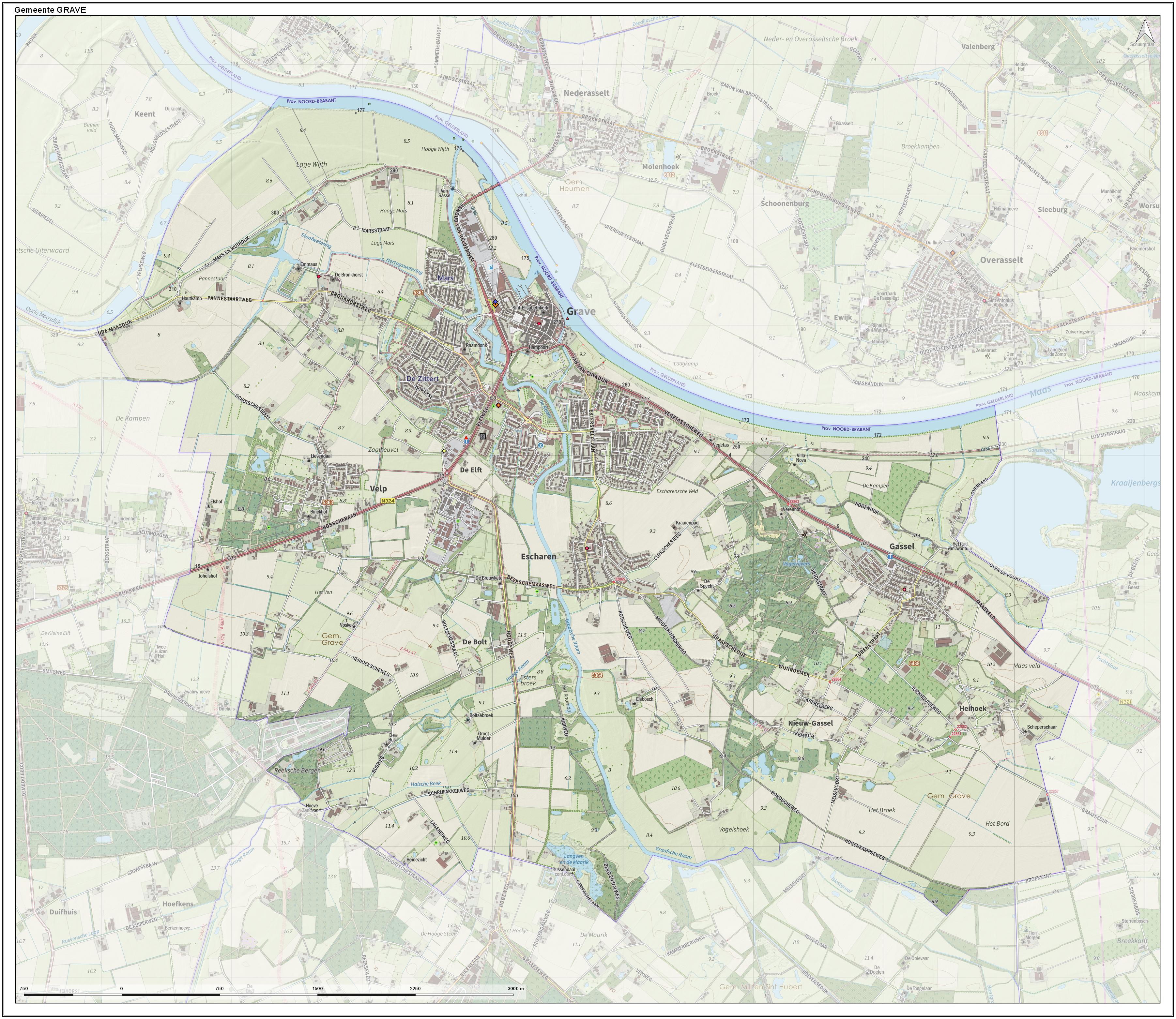|
Siege Of Rheinberg (1601)
The siege of Rheinberg, also known as the Rhine campaign of 1601, was the siege of the towns of Rheinberg (Old Dutch: Rijnberk) and Meurs from 12 June to 2 August 1601 during the Eighty Years' War and the Anglo–Spanish War. Maurice of Orange with an Anglo-Dutch army besieged the Spanish-held cities in part to distract them before their impending siege at Ostend. Rheinberg, an important city, eventually capitulated on 28 July after a Spanish relief force under Herman van den Bergh failed to relieve the city. The towns of Meurs surrendered soon after. Background In mid-June 1601 Albert of Austria was in preparation to besiege the Anglo-Dutch held town of Ostend, and at the same time the States General demanded that the stadtholder Maurice of Orange should march to relieve the city. Francis Vere, the English governor of Ostend, was frustrated at the lack of Dutch response from both the States General and from Maurice; particularly when a few veteran English companies including ... [...More Info...] [...Related Items...] OR: [Wikipedia] [Google] [Baidu] |
Eighty Years' War
The Eighty Years' War or Dutch Revolt ( nl, Nederlandse Opstand) ( c.1566/1568–1648) was an armed conflict in the Habsburg Netherlands between disparate groups of rebels and the Spanish government. The causes of the war included the Reformation, centralisation, taxation, and the rights and privileges of the nobility and cities. After the initial stages, Philip II of Spain, the sovereign of the Netherlands, deployed his armies and regained control over most of the rebel-held territories. However, widespread mutinies in the Spanish army caused a general uprising. Under the leadership of the exiled William the Silent, the Catholic- and Protestant-dominated provinces sought to establish religious peace while jointly opposing the king's regime with the Pacification of Ghent, but the general rebellion failed to sustain itself. Despite Governor of Spanish Netherlands and General for Spain, the Duke of Parma's steady military and diplomatic successes, the Union of Utr ... [...More Info...] [...Related Items...] OR: [Wikipedia] [Google] [Baidu] |
Dutch Republic
The United Provinces of the Netherlands, also known as the (Seven) United Provinces, officially as the Republic of the Seven United Netherlands ( Dutch: ''Republiek der Zeven Verenigde Nederlanden''), and commonly referred to in historiography as the Dutch Republic, was a federal republic that existed from 1579, during the Dutch Revolt, to 1795 (the Batavian Revolution). It was a predecessor state of the Netherlands and the first fully independent Dutch nation state. The republic was established after seven Dutch provinces in the Spanish Netherlands revolted against rule by Spain. The provinces formed a mutual alliance against Spain in 1579 (the Union of Utrecht) and declared their independence in 1581 (the Act of Abjuration). It comprised Groningen, Frisia, Overijssel, Guelders, Utrecht, Holland and Zeeland. Although the state was small and contained only around 1.5 million inhabitants, it controlled a worldwide network of seafaring trade routes. Through it ... [...More Info...] [...Related Items...] OR: [Wikipedia] [Google] [Baidu] |
Frederick Henry, Prince Of Orange
Frederick Henry ( nl, Frederik Hendrik; 29 January 1584 – 14 March 1647) was the sovereign prince of Orange and stadtholder of Holland, Zeeland, Utrecht, Guelders, Overijssel in the Dutch Republic from 1625 until his death in 1647. In the last seven years of his life, he was also the stadtholder of Groningen (1640-1647). As the leading soldier in the Dutch wars against Spain, his main achievement was the successful Siege of 's-Hertogenbosch in 1629. It was the main Spanish base and a well-fortified city protected by an experienced Spanish garrison and by formidable water defenses. His strategy was the successful neutralization of the threat of inundation of the area around 's-Hertogenbosch' and his capture of the Spanish storehouse at Wesel. Biography Early life Frederick Henry was born on 29 January 1584 in Delft, Holland, Dutch Republic. He was the youngest child of William the Silent and Louise de Coligny. His father William was stadtholder of Holland, Zeeland, Utrec ... [...More Info...] [...Related Items...] OR: [Wikipedia] [Google] [Baidu] |
Ambrogio Spinola, 1st Marquis Of The Balbases
Ambrogio Spinola Doria, 1st Marquess of Los Balbases and 1st Duke of Sesto (1569-25 September 1630) was an Italian ''condottiero'' and nobleman of the Republic of Genoa, who served as a Spanish general and won a number of important battles. He is often called "Ambrosio" by Spanish-speaking people and is considered one of the greatest military commanders of his time and in the history of the Spanish army. His military achievements earned him the title of ''Marquess of Los Balbases'' in the Spanish peerage, as well as the Order of the Golden Fleece and Order of Santiago. Early life Ambrogio Spinola was born in Genoa, the eldest son of Filippo Spinola, Marquis of Sexten and Venafro, and his wife Polissena Grimaldi, daughter of Nicolò prince of Salerno. The family of Spinola was of great antiquity, wealth and power in Genoa. Don Ambrogio's sister Donna Lelia was married to Don Giulio Cesare Squarciafico, 2nd Marquess of Galatone, from whom descend the Princes of Belmonte. In th ... [...More Info...] [...Related Items...] OR: [Wikipedia] [Google] [Baidu] |
Mining (military)
Tunnel warfare involves war being conducted in tunnel and other underground cavities. It often includes the construction of underground facilities (mining or undermining) in order to attack or defend, and the use of existing natural caves and artificial underground facilities for military purposes. Tunnels can be used to undermine fortifications and slip into enemy territory for a surprise attack, while it can strengthen a defense by creating the possibility of ambush, counterattack and the ability to transfer troops from one portion of the battleground to another unseen and protected. Also, tunnels can serve as shelter from enemy attack. Since antiquity, sappers have used mining against walled cites, fortresses, castles or other strongly held and fortified military positions. Defenders have dug counter-mines to attack miners or destroy a mine threatening their fortifications. Since tunnels are commonplace in urban areas, tunnel warfare is often a feature, though usually a min ... [...More Info...] [...Related Items...] OR: [Wikipedia] [Google] [Baidu] |
Spanish Flanders
The Southern Netherlands, also called the Catholic Netherlands, were the parts of the Low Countries belonging to the Holy Roman Empire which were at first largely controlled by Habsburg Spain (Spanish Netherlands, 1556–1714) and later by the Austrian Habsburgs (Austrian Netherlands, 1714–1794) until occupied and annexed by Revolutionary France (1794–1815). The region also included a number of smaller states that were never ruled by Spain or Austria: the Prince-Bishopric of Liège, the Imperial Abbey of Stavelot-Malmedy, the County of Bouillon, the County of Horne and the Princely Abbey of Thorn. The Southern Netherlands comprised most of modern-day Belgium and Luxembourg, small parts of the modern Netherlands and Germany (the Upper Guelders region, as well as the Bitburg area in Germany, then part of Luxembourg), in addition to (until 1678) most of the present Nord-Pas-de-Calais region, and Longwy area in northern France. The (southern) Upper Guelders region consisted o ... [...More Info...] [...Related Items...] OR: [Wikipedia] [Google] [Baidu] |
Moers Nach 1600
Moers (; older form: ''Mörs''; archaic Dutch: ''Murse'', ''Murs'' or ''Meurs'') is a German city on the western bank of the Rhine, close to Duisburg. Moers belongs to the district of Wesel. History Known earliest from 1186, the county of Moers was an independent principality within the Holy Roman Empire. During the Eighty Years' War it was alternately captured by Spanish and Dutch troops, as it bordered the Upper Quarter of Guelders. During the war it finally fell to Maurice of Orange. As it was separated from the Dutch Republic by Spanish Upper Guelders it did not become an integral part of the Republic, though Dutch troops were stationed there. After the death of William III of Orange in 1702, Moers was inherited by the king of Prussia. All Dutch troops and civil servants were expelled. In 1795 it was annexed by France. At the Congress of Vienna, in 1815 it was returned to Prussia and in 1871 it became part of the German Empire. A target of the Oil Campaign of World ... [...More Info...] [...Related Items...] OR: [Wikipedia] [Google] [Baidu] |
Siege Of Ostend
The siege of Ostend was a three-year siege of the city of Ostend during the Eighty Years' War and the Anglo–Spanish War. A Spanish force under Archduke Albrecht besieged the fortress being held initially by a Dutch force which was reinforced by English troops under Francis Vere, who became the town's governor. It was said "the Spanish assailed the unassailable; the Dutch defended the indefensible."Belleroche p 14 The commitment of both sides in the dispute over the only Dutch-ruled area in the province of Flanders, made the campaign continue for more than any other during the war. This resulted in one of the longest and bloodiest sieges in world history: more than 100,000 people were killed, wounded, or succumbed to disease during the siege. Ostend was resupplied via the sea and as a result held out for three years.van Nimwegen pp 171–73 A garrison did a tour of duty before being replaced by fresh troops, normally 3,000 at a time keeping casualties and disease to a m ... [...More Info...] [...Related Items...] OR: [Wikipedia] [Google] [Baidu] |
Henry Percy, 9th Earl Of Northumberland
Henry Percy, 9th Earl of Northumberland, KG (27 April 1564 – 5 November 1632) was an English nobleman. He was a grandee and one of the wealthiest peers of the court of Elizabeth I. Under James I, Northumberland was a long-term prisoner in the Tower of London, due to the suspicion that he was complicit in the Gunpowder Plot. He is known for the circles he moved in as well as for his own achievements. He acquired the sobriquet The Wizard Earl (also given to Gerald FitzGerald, 11th Earl of Kildare), from his scientific and alchemical experiments, his passion for cartography, and his large library. Early life He was born at Tynemouth Castle in Northumberland, England, the son of Henry Percy, 8th Earl of Northumberland, whom he succeeded in 1585. His father died, an apparent suicide, in the Tower of London, where he was being questioned about his allegedly treasonable dealings with Mary Queen of Scots. His mother was Katherine Neville, daughter and co-heiress of John Ne ... [...More Info...] [...Related Items...] OR: [Wikipedia] [Google] [Baidu] |
Arolsen Klebeband 01 355
Bad Arolsen (, until 1997 Arolsen, ''Bad'' being the German name for ''Spa'') is a small town in northern Hesse, Germany, in Waldeck-Frankenberg district. From 1655 until 1918 it served as the residence town of the Princes of Waldeck-Pyrmont and then until 1929 as the capital of the Waldeck Free State. The International Tracing Service has its headquarters in Bad Arolsen. In 2003, the town hosted the 43rd Hessentag state festival. Geography Location Bad Arolsen is situated roughly 45 km west of Kassel. The German- Dutch holiday road called the Orange Route runs through the town, joining towns, cities and regions associated with the House of Orange. Neighbouring communities Bad Arolsen neighbours are: the town of Diemelstadt to the north, the town of Volkmarsen (both belonging to the county of Waldeck-Frankenberg); the town of Wolfhagen in the southeast (Kassel district); the town of Waldeck to the south, the community of Twistetal to the southwest; the community of ... [...More Info...] [...Related Items...] OR: [Wikipedia] [Google] [Baidu] |
's-Hertogenbosch
s-Hertogenbosch (), colloquially known as Den Bosch (), is a city and municipality in the Netherlands with a population of 157,486. It is the capital of the province of North Brabant and its fourth largest by population. The city is south of the Maas river and near the Waal; it is to the north east of the city of Tilburg, north west of Eindhoven, south west of Nijmegen, and a longer distance south of Utrecht and south east of Dordrecht. History The city's official name is a contraction of the (archaic) Dutch ''des Hertogen bosch'' — "the forest of the duke". The duke in question was Henry I of Brabant, whose family had owned a large estate at nearby Orthen for at least four centuries. He founded a new town located on some forested dunes in the middle of a marsh. At age 26, he granted 's-Hertogenbosch city rights and the corresponding trade privileges in 1185. This is, however, the traditional date given by later chroniclers; the first mention in contemporaneous sour ... [...More Info...] [...Related Items...] OR: [Wikipedia] [Google] [Baidu] |
Grave, Netherlands
Grave (; formerly ''De Graaf'') is a city and former municipality in the Dutch province of North Brabant. The former municipality had a population of in . Grave is a member of the Dutch Association of Fortified Cities. The former municipality included the following towns : Grave (capital), Velp, Escharen and Gassel. Grave, Boxmeer, Cuijk, Mill en Sint Hubert, and Sint Anthonis merged into the new municipality of Land van Cuijk on 1 January 2022. History Grave received city rights in 1233. The former municipality of Grave was formed in the Napoleonic era (1810) and coincided with the fortified Grave and immediate surroundings. The history of the town was thus linked to that of the place. This changed in 1942. Then there was a reclassification place where the municipality Grave was expanded with the previously independent municipalities Velp and Escharen. Moreover, in 1994 the neighboring municipality of Beers was abolished and a part thereof, the parish Gassel, w ... [...More Info...] [...Related Items...] OR: [Wikipedia] [Google] [Baidu] |

.jpg)

.jpg)
.jpg)






